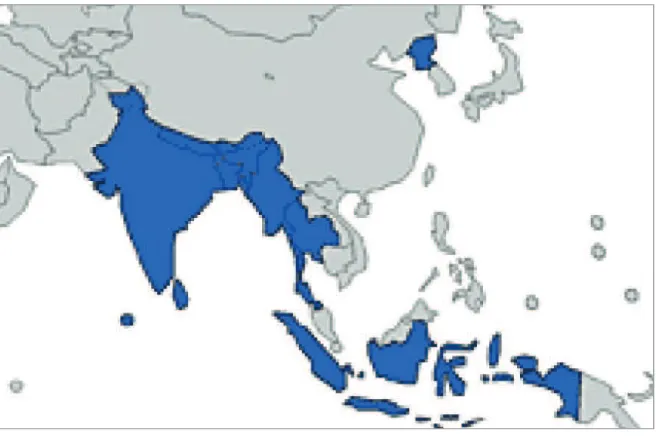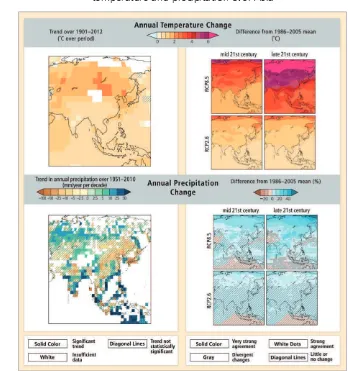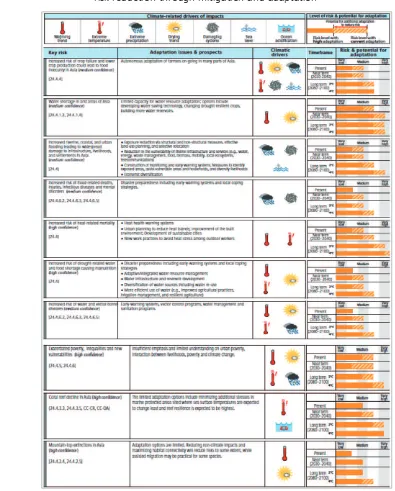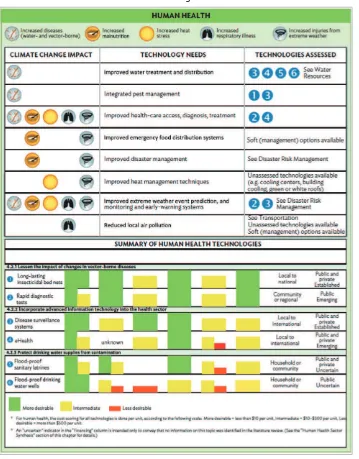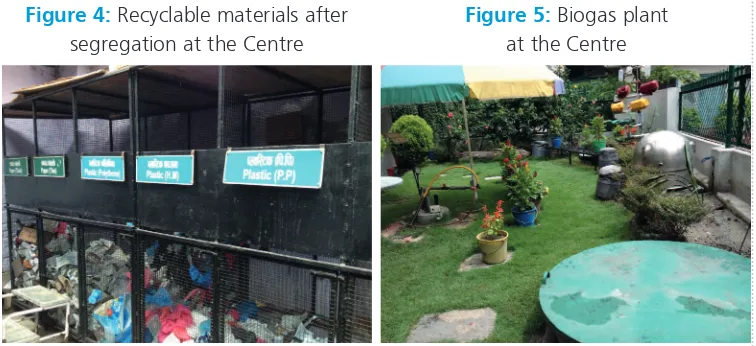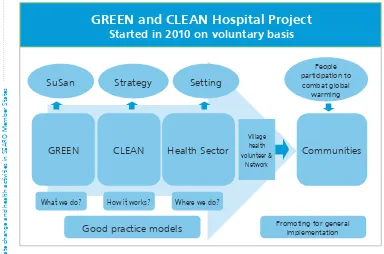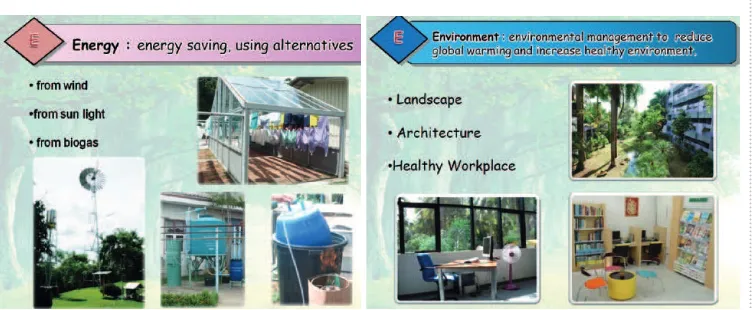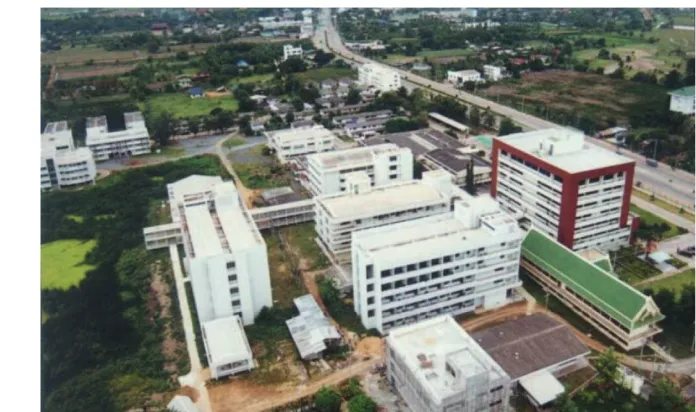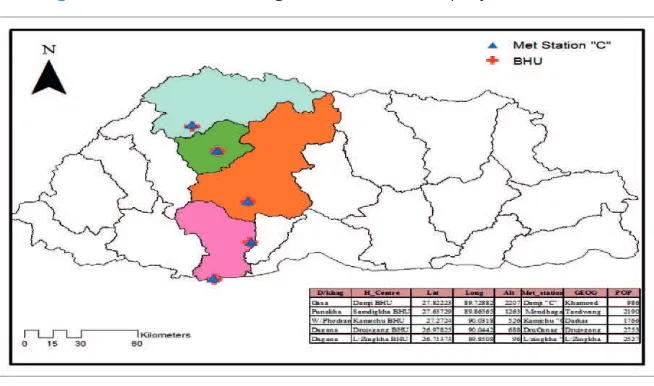Review of
CLIMATE CHANGE and
HEALTH ACTIVITIES
in SEARO MEMBER STATES
Review of
CLIMATE CHANGE and
HEALTH ACTIVITIES
in SEARO MEMBER STATES
Synthesis Report
© World Health Organization 2015
All rights reserved.
Requests for publications, or for permission to reproduce or translate WHO publications – whether for sale or for noncommercial distribution – can be obtained from SEARO Library, World Health Organization, Regional Office for South-East Asia, Indraprastha Estate, Mahatma Gandhi Marg, New Delhi 110 002, India (fax: +91 11 23370197; e-mail: [email protected]).
The designations employed and the presentation of the material in this publication do not imply the expression of any opinion whatsoever on the part of the World Health Organization concerning the legal status of any country, territory, city or area or of its authorities, or concerning the delimitation of its frontiers or boundaries. Dotted lines on maps represent approximate border lines for which there may not yet be full agreement.
The mention of specific companies or of certain manufacturers’ products does not imply that they are endorsed or recommended by the World Health Organization in preference to others of a similar nature that are not mentioned. Errors and omissions excepted, the names of proprietary products are distinguished by initial capital letters.
All reasonable precautions have been taken by the World Health Organization to verify the information contained in this publication. However, the published material is being distributed without warranty of any kind, either expressed or implied. The responsibility for the interpretation and use of the material lies with the reader. In no event shall the World Health Organization be liable for damages arising from its use.
This publication does not necessarily represent the decisions or policies of the World Health Organization.
Acknowledgment
The regional synthesis report was prepared by Kristie L Ebi, University of Washington and Kathryn Bowen, Independent Consultant, Australia, based on review of climate change and health work in Bangladesh, Bhutan, India, Indonesia, Maldives, Myanmar, Nepal, Sri Lanka, Thailand and Timor-Leste. The two experts had reviewed policies and programs on climate change and health followed by visits to some countries, held interviews and consultations with key stakeholders. WHO/SEARO would like to thank the two experts, climate change and health focal points of the 10 countries. The review was coordinated and reviewed by WHO focal points: Payden, David Sutherland, SG Mahmud, Nima Wangchuk, Sadhana Bhagwat, Sharad Adhikary, Myo Myint Naing, Mohamed Sathu Rasheed, Raja Ram Pote, Art Pesigan, Liviu Vedrasco, Sushera Bunluesin and Tito De Aquino.
This report was supported by the Global Program Adaptation to Climate Change in the Health Sector implemented by the Deutsche Gesellschaft für Internationale Zusammenarbeit (GIZ) GmbH and commissioned by the Federal Ministry for Economic Cooperation and Development (BMZ).1 We thank Ute Jugert (GIZ) for her valuable support.
Contents
1. Introduction ...1
1.1 Terms of Reference for review...1
2. Regional overview ...5
2.1 Physical geography, demographics, economy and health status ...5
2.2 Climate change in the Region ...6
2.3 Climate change and expected health risks in the Region ...9
2.4 History of climate change and health activity in the Region ...11
2.5 Results of an assessment of technology needs to manage health risks of climate change for the Asia Region ...12
3. Regional findings – strengths and opportunities ...14
3.1 Awareness levels ...14
3.2 Mainstreaming of climate change into public health programmes...15
3.3 Partnerships between health and the environment (and other related sectors) ...20
3.4 The level of priority given to health adaptation and mitigation in climate change action plans ...24
4. Next steps for SEARO ...27
References ...31
Appendix ...32
Review of climate change and health activities in SEARO Member States
1
Introduction
1.1 Terms of Reference for review
Introduction
It has been scientifically proven that climate is changing and that the impact on health is real. Health injuries, illnesses and deaths caused by extreme weather events such as heatwaves, hurricanes and floods are obvious. Climate change also is affecting the geographic range and incidence of infectious diseases, such as diarrhoeal disease and malaria, and undernutrition. Further, climate change has more subtle and sustained impacts on human health by affecting the three basic pillars of life: air, water and food. Climate change induced mainly by human activities is occurring, with major effects on human health. The World Health Report
2002 estimated that about 82 000 persons died due to climate change
and its consequences in South-East Asia in 2000. Among WHO regions, South-East Asia had the highest estimated deaths due to climate change. The most vulnerable populations of South-East Asia (Bangladesh, Bhutan, Democratic People’s Republic of Korea, India, Indonesia, Maldives, Myanmar, Nepal, Sri Lanka, Thailand and Timor-Leste) consist of small-scale and marginal farmers dependent on rain-fed agriculture, the rural poor, urban slum dwellers, mountain people, the populations of small islands and those living on the seacoast. The pre-existing high burdens of climate-sensitive diseases (particularly malnutrition, vectorborne diseases
Review of climate change and health activities in SEARO Member States
and diarrhoeal diseases), weak public health systems, and limited access to primary health care contribute to the vulnerability of millions of people in South-East Asia. Extreme weather events may further disrupt frail health infrastructure.
For more than 10 years, WHO has been advocating, supporting and guiding Member States to address climate change impacts on health. Regional meetings, high level conferences and national meetings have been conducted. Countries such as Bangladesh, Bhutan, Nepal, Indonesia and India (two districts) carried out health vulnerability and adaptation assessments. Regional and national trainings on the subject have been provided. Since 2010, Bhutan has been implementing a health adaptation to climate change project. Two new projects to adapt to climate change focusing on resilient water and sanitation services were started in Bangladesh and Nepal in 2013. Retrospective studies on vectorborne and waterborne diseases and climate change were commissioned in Bangladesh, Myanmar, Nepal and Sri Lanka. Six least-developing countries from the region prepared National Adaptation Programmes of Actions (NAPA) and submitted them to the UNFCCC Secretariat. All countries have developed some sort of national plan and strategy for addressing the health risks of climate change.
A review of the work on climate change and health was conducted for all Member States, exploring awareness levels, capacity and impacts of climate change on Member States. Case studies on health adaptation and mitigation measures were prepared.
Objectives
The objective of the review is to further strengthen the work of climate change and health in the South-East Asia Member States.
The assessment will:
1. Review the adaptive capacity of the health sector to climate change risks, via the following objectives:
(i) Measure awareness levels of MoH decision-makers and
Review of climate change and health activities in SEARO Member States
3
(ii) Review if climate change considerations are mainstreamed
into public health programmes, via an analysis of the extent to which health is included in climate change plans.
(iii) Review the partnerships between health and the
environment through interviews with selected key informants. (iv) Review the level of priority given to health adaptation and
mitigation in national climate change action plans
(v) Assess health adaptation and mitigation measures at a selected number of countries and prepare case studies (vi) Identify gaps in current country plans, policies and strategies
based on interviews and review of documents
(vii) Recommend strategic action at country and regional levels. The review was carried out for 10 of the 11 Member States of the WHO South-East Asia Region (Democratic People’s Republic of Korea was not included for operational reasons).
Outputs
1. A regional synthesized report detailing the status of climate change and health adaptation status for each country, level of awareness, capacity and cross-sectoral collaboration to address climate change risks to health.
2. Recommendations for further strengthening work in each country and as a Region.
This report is a companion document to the Regional Strategy for Protecting Health from Climate Change (2012), produced by WHO SEARO.
Timeliness and usefulness of the report
Review of climate change and health activities in SEARO Member States
Review of climate change and health activities in SEARO Member States
5
Regional overview
2.1 Physical geography, demographics, economy and health status
Figure 1: South-East Asia Region Member States (shaded in blue)
The South-East Asia region has 11 Member States – Bangladesh, Bhutan, Democratic People’s Republic of Korea, India, Indonesia, Maldives,
Review of climate change and health activities in SEARO Member States
Myanmar, Nepal, Sri Lanka, Thailand and Timor-Leste. The Region is home to approximately one fourth of the world’s population.
The physical geography of the region is incredibly diverse and varied – from long coastal stretches in India and Thailand, to landlocked mountainous ranges in Bhutan and Nepal.
The economic status of the Region is almost as diverse as its physical geography; India and Indonesia are in the top 20 of the global GDP rankings (10 and 16 respectively), while Nepal, Maldives, Bhutan and Timor-Leste are much lower on this (much-debated) GDP ranking (109, 165, 168, 174 respectively) (World Bank, 2015). India and Indonesia are members of the G20, which comprises a mix of the world’s largest advanced and emerging economies. The G20 identified climate change finance as one of its priorities in 2015.
In addition, Indonesia and Thailand are members of the Asia-Pacific Economic Partnership (APEC) group – the goal of which is to support economic growth and prosperity in the Asia-Pacific Region. This group has many areas of focus, including health and sustainable development. Climate change is not explicitly mentioned as a topic of focus. Also, six of the countries in the South-East Asia Region (Bangladesh, Bhutan, India, Maldives, Nepal and Sri Lanka) are members of the South Asian Association for Regional Cooperation (SAARC); SAARC is both an economic grouping and involved in important initiatives connected to climate change such as the SAARC Disaster Management Centre (SDMC).
Table 1 presents the health profiles of each member country included in this review, illustrating the diversity the Region extends to health indicators. As would be expected, the top five causes of death among those countries with higher GDP typically are chronic diseases, except for India, which has high burdens of communicable and chronic diseases.
2.2 Climate change in the Region
Review of climate change and health activities in SEARO Member States
7
Table 1: Country health profiles
Bangladesh Bhutan India Indonesia Maldives Myanmar Nepal Sri Lanka Thailand Timor-Leste
Population 156.6 million < 700 000 1.2 billion 249.8 million 330 000 53.2 million 28 million 20.5 million 67.0 million 1.2 million
% Urbanization 30 >70% by 2020 31 52 27 30 17 38 49 30
Infant mortality rate per 1000 live births
33 40.1 44 24.5 10 40 32 6 11 48
Age-standardized death rate per 100 000
864 822 1097 867 440 1185 832 620 663 872
Life expectancy at birth
69.0 69.4 65.2 69.7 78.8 63.9 69.2 75.5 74.1 68.7
Top five causes of death:
Review of climate change and health activities in SEARO Member States
Figure 2: Observed and projected changes in annual average temperature and precipitation over Asia
Source: Hijioka et al. 2014.
most of South-East Asia, annual temperatures over the past 100 years increased approximately 1°C per decade. Projected temperature in the middle and at the end of the century depends on the emission pathway (RCP or Representative Concentration Pathway 2.6 is a low emission pathway and RCP 8.5 is a high emission pathway), with an upper range up to 6°C.
Review of climate change and health activities in SEARO Member States
9
decreasing. In south Asia, seasonal mean rainfall has declined, with more frequent deficit monsoons. Projected changes in precipitation are highly variable, with increasing and decreasing trends observed in different parts and seasons of Asia. Precipitation extremes related to the monsoon are projected to increase in south and south-east Asia, with precipitation likely to become more extreme near the centres of tropical cyclones making landfall.
2.3 Climate change and expected health risks in the Region Across the Asia Region, the IPCC assessment of the current health risks of climate variability and change focused on flooding, drought and waterborne and vectorborne diseases.
♦ Epidemics have been reported after floods and storms as a result of decreased drinking water quality, mosquito proliferation and exposure to rodentborne pathogens. Contaminated urban floodwaters have caused exposure to pathogens and toxic compounds, in India, for example. Mental disorders including post-traumatic stress disorder were observed in disaster-prone areas and, in India, were linked to age and gender.
♦ Dust storms result in increased hospital admissions and worsen
asthmatic conditions, as well as causing skin and eye irritations. Droughts may also lead to wildfires and smoke exposure, with increased morbidity and mortality. Drought can also disrupt food security, increasing undernutrition and susceptibility to infectious diseases.
♦ A greater incidence of diarrhoeal diseases is associated with higher temperatures and heavy rainfall. Cholera outbreaks in coastal populations in South Asia are associated with increased water temperatures and the El Nino Southern Oscillation.
♦ Increasing temperatures can increase vector populations and
enhance disease transmission. Dengue outbreaks are correlated with temperature and rainfall with varying time lags.
Review of climate change and health activities in SEARO Member States
Figure 3: Key risks from climate change in Asia and the potential for risk reduction through mitigation and adaptation
Review of climate change and health activities in SEARO Member States
11
vectorborne diseases, as vector species that carry and transmit diseases migrate to more hospitable environments.
Figure 3 summarizes the key risks from climate change in Asia and the potential for risk reduction through mitigation and adaptation. Levels of risk are presented for (1) the near-term era of committed climate change (2030–2040), in which projected levels of global mean temperature increase do not diverge substantially across emissions scenarios. Risk levels also are presented for the longer-term era of climate options (2080–2100), for global mean temperature increases of 2°C and 4°C above pre-industrial levels. For each timeframe, risk levels were estimated for the current state of adaptation and for a hypothetical highly adapted state. Adaptation issues and prospects are indicated for each key risk. Relevant climate variables are indicated by symbols. The key risks for health include flood-related injuries, infectious diseases, death, mental disorders and heat-related mortality. While adaptation can reduce health risks, considerable residual risk is expected mid- and end of the century.
2.4 History of climate change and health activity in the Region
Several countries in the South-East Asia Region are or have been involved in multi-national adaptation projects, including those funded by the Global Environment Facility, the World Bank and the Rockefeller Foundation.
♦ Bhutan was part of the WHO/UNDP – Global Environment Facility
(GEF) project “Pilot Program on Climate Change Adaptation to
Review of climate change and health activities in SEARO Member States
preparedness and disease prevention measures. The project was completed in May 2015.
♦ Bangladesh and Nepal are part of the Pilot Program for Climate
Resilience (PPCR) funded by the World Bank, the Asia Development Bank, the Inter-American Development Bank, the European Bank and the African Development Bank Group. The PPCR is designed to assist low- and middle-income countries in integrating climate resilience into development planning. Building on the country NAPAs and other efforts, the PPCR also offers funding to pilot public and private sector solutions to pressing climate-related risks. Bangladesh is focusing on improving climate-resilient agriculture and food security, strengthening the security and reliability of fresh water supply, sanitation and infrastructure, and enhancing the resilience of coastal communities and infrastructure. Nepal is focusing on enhancing water resources management, climate information systems and disaster risk, and agriculture and landscapes management.
♦ The Rockefeller Foundation pioneered a Framework for Articulating City Resilience that underpins and reinforces a city’s resilience. The framework is an inclusive method for articulating city resilience, underpinning and reinforcing the City Resilience Index’s full suite of indicators and variables. It is being used by 100 cities participating in the Resilient Cities Challenge, including Bangalore, Chennai, Bangkok, Surat, Mandalay and Semarang.
2.5 Results of an assessment of technology needs to manage health risks of climate change for the Asia Region
Review of climate change and health activities in SEARO Member States
13
Table 2: Summary of adaptation technology needs in the health sector in the Asia Region
Review of climate change and health activities in SEARO Member States
Regional findings –
strengths and opportunities
The country reports were analysed to i) identify common themes and points of difference and ii) highlight areas of strength and opportunities for improvement. This information was synthesized to develop key regional results. The summaries below provide a brief synthesis of the country reports; further detailed information can be found in each relevant country report.
3.1 Awareness levels
Awareness levels of stakeholders were assessed for the following areas: weather events; the links between health and weather events; how climate change might occur over the next 25 years in each country; and the associated health risks. Stakeholders were only requested to respond to their country’s context.
All stakeholders strongly indicated that their countries were vulnerable to weather events, and most agreed that these weather events would become severe in the next 25 years. A small number indicated a degree of specificity in terms of how weather patterns could change, such as increases in the frequency and intensity of particular extreme and climate events.
Review of climate change and health activities in SEARO Member States
15
The majority of stakeholders could nominate at least one climate-sensitive health outcome in their respective countries, and many accurately identified the full range of health outcomes of concern. A small number could identify direct and indirect health risks, such as deaths directly resulting from landslides and heatwaves, and health outcomes arising from threats to food security due to extreme weather and climate events. Most stakeholders agreed that these health outcomes could increase over the next 25 years with climate change, although some noted that further research was needed to better understand the magnitude and pattern of possible increases in risks in their countries. There was some degree of optimism, with a small number of stakeholders indicating that effective health systems and programmes could reduce the health risks of a changing climate.
There was a low level of awareness among stakeholders of measures being taken to address the health risks from climate change. Few stakeholders could identify any projects being undertaken by their own or other organization/s. If stakeholders were aware of measures, their perception on the adequacy of these measures was assessed. In most cases, stakeholders indicated that current measures are inadequate and that additional and supportive measures are needed to prepare for any projected changes in health burdens due to climate change. Many countries highlighted the importance of implementing the health activities prioritized within the NAPA documents.
3.2 Mainstreaming of climate change into public health programmes
Currently, only a small number of national public health policies include climate change as a key consideration. This is concerning. Unless the health risks arising from climate change are clearly articulated, then it is difficult to (i) develop appropriate responses, (ii) garner the support from partner ministries (such as water, agriculture, etc.) for climate change and health activities, the bulk of which are inherently cross-sectoral and (iii) access funding for health and climate change activities.
Review of climate change and health activities in SEARO Member States
collaborate with such programmes to ensure that policies and programmes promote health and well-being, and to seek joint adaptation funding.
This report identifies a number of gaps for SEARO to consider addressing in relation to the mainstreaming of climate change into public health programmes, the clearest gap being that countries need to incorporate climate change issues in a robust manner – with detailed timelines, identification of required human and financial resources and partners – within their respective country health priorities and plans. Most countries noted additional capacity-building is needed within the Ministry of Health on climate change, and within other ministries on the health risks of climate variability and change. In addition, opportunities exist to support country partners to encourage the secondment of environment/ climate change ministry officials within the Ministry of Health and its climate change/environment unit. There also appears to be opportunities to improve the visibility and representation of the health sector on national- and regional-level climate change working groups and committees. There is a lack of reporting frameworks to support all ministries to report on climate change and health activities; if such a mechanism existed, this would improve mainstreaming attempts and also have a large potential to develop and strengthen health activities, many of which are cross-sectoral and multidisciplinary.
Two case studies are presented here to demonstrate the efforts that the health sector is undertaking to directly incorporate climate change issues within public health activities.
Case study of good practice: Health Care Waste Management Center– Bir Hospital, Kathmandu, Nepal
The Health Care Waste Management Centre was established in 2011 at Bir Hospital, Kathmandu. The Centre was endorsed by WHO with technical assistance from the Nepal Public Health Foundation and Health Care Without Harm. The Centre is based on three pillars – waste management, injection safety, and mercury elimination. Prior to the Centre’s development on hospital grounds, the site was used for dumping waste.
The Centre has three main functions – (i) recycling; (ii) biological treatment of food/human waste; and (iii) safe storage of mercury.
Review of climate change and health activities in SEARO Member States
17
infectious waste – including bandages and cotton – is treated in the autoclave for sterilization and then placed in the vermicomposter (worm farm). A trolley is fitted with colour-coded buckets for risk and non-risk waste collection within the hospital. Approximately 80–100 kilograms of waste is collected per day from the hospital.
The second function of the Centre (Figure 5) is a biogas plant that manages biodegradable waste, including food and human waste (e.g. from surgical operations). The plant then produces fertiliser (slurry) that will eventually be sold to farmers once safety tests are completed, and methane and carbon dioxide that are currently being used to run the Centre’s kitchen and autoclaves. Future plans include the purchase of a generator for electricity to power the street lamps within the hospital compound.
The safe storage of mercury is the third function of the Centre. Mercury is found in thermometers, fluorescent lamps and batteries and other items, and exposure is a health risk. The items containing mercury are stored in a designated collection house pending the development of safe disposal options.
Many benefits are observable from the Centre’s operation, ranging from climate change mitigation to capacity development. The total reduction of greenhouse gases within the hospital as a result of the Centre’s activities was estimated to be 75.8 tonnes of carbon dioxide per annum, equating to US$ 531. In 2012, 79% of total waste is being recycled in the hospital. The cost of setting up the Centre was approximately US$ 6000, and it is expected that this cost will be paid back in three to
Figure 5: Biogas plant at the Centre
Review of climate change and health activities in SEARO Member States
four years. An additional benefit of the Centre is that burn injury patients are trained to make handicrafts for purchase from the plastic waste.
This Centre is a highly commendable example of a sustainability project that focuses on mitigation of climate change that will, in turn, have positive health effects. It is pleasing to note that Centre staff participate in community education and training to share their experience and knowledge in areas beyond Kathmandu, and this type of dissemination and further implementation should be strongly encouraged.
Case study of good practice: Greening the health-care sector – Thailand
Hospitals and health-care facilities can be a significant source of greenhouse gas emissions because of their energy intensity. In 2010, the Ministry of Public Health implemented a policy to reduce the carbon footprint of the Government’s 10 644 hospitals (835 hospitals and 9769 sub-district hospitals under the MoPH). Figure 6 shows the outline of the GREEN and CLEAN hospital project.
The Green and Clean Hospital Project is designed to (1) campaign on sustainable sanitation; (2) increase awareness, knowledge, and
Figure 6: Thailand GREEN and CLEAN hospital project
SuSan Setting
GREEN CLEAN Health Sector Communities
Village health volunteer &
Network
What we do? How it works? Where we do?
Good practice models Promoting for general implementation
Review of climate change and health activities in SEARO Member States
19
understanding of public health personnel of the health risks of climate change; and (3) develop a good practice model for hospitals. The project started on a voluntary basis. Activities of the GREEN components include: Garbage (solid waste management focusing on reduce, reuse and recycle); Restroom (management meets health, safety and accessibility standards); Energy (savings using alternatives such as wind, solar and biogas); Environment (management to reduce climate change and increase a health environment); and Nutrition (food safety and energy savings from food transportation). Examples are shown in the figures. Figure 7 shows some activities within selected GREEN components. The CLEAN components include: Communication; Leadership; Effectiveness; Activities; and Networking. The hospital’s carbon footprint is one indicator of success.
Figure 7: Some activities within selected GREEN components
Review of climate change and health activities in SEARO Member States
Further, hospital staff are very engaged with the local community, providing education and capacity-building on energy efficiency, good health practices and other topics. As with the case study in Nepal, this is a highly commendable example of a sustainability project focusing on reducing greenhouse gas emissions that will have positive health effects. Providing further details on the design, implementation, and running of such programmes to other hospitals in the South-East Asia Region, including how to calculate greenhouse gas emissions from health-care facilities, would promote knowledge transfer across countries.
Figure 8: 17th Somdejphrasangkharaj Hospital
3.3 Partnerships between health and the environment (and other related sectors)
Review of climate change and health activities in SEARO Member States
21
Opportunities exist for workplace secondments between the Ministry of Health and the Ministry of Environment/Climate Change to strengthen partnerships between these sectors (as indicated above in the Mainstreaming section). The health sector could also be better represented at regional organizations to encourage partnerships and collaboration, and to share country-level health and climate change activities for the purposes of developing networks and mutual learning among countries.
Two case studies of good practice are presented here to demonstrate the outcomes of successful and effective partnerships, at a government and community level.
Case study of good practice: Piloting Integrated Surveillance for Climate-Sensitive Diseases in Bhutan
Effective partnerships between the health, meteorology and environment sectors are evident in the project just completed in Bhutan to pilot integrated surveillance for climate-sensitive diseases.
The aim of the project is to monitor the risk factors (weather variables) along with the collection of routine epidemiological surveillance data for climate-sensitive diseases. Data from the following climate-sensitive diseases are collected – diarrhoea, acute respiratory infections, malaria, dengue, Japanese encephalitis, Kala-azar and dysentery. There are six of these adaptation systems being piloted in Bhutan (see Figure 9).
Figure 9: Location of integrated surveillance projects in Bhutan
Review of climate change and health activities in SEARO Member States
Ministry of Health collaborates with the Department of Hydro-Met Services, Ministry of Economic Affairs (MoEA) , to conduct the project.
The Health Assistant at the BHU collects daily rainfall (Figure 10), humidity and maximum and minimum temperatures using the weather station alongside the BHU. Health data are sent monthly in excel format to Department of Public Health (DoPH and meteorological data are sent on paper to the Department of Hydrology and Meteorology.
Figure 10: Collecting and measuring rainfall data at BHU
In the short term, climate sensitivity analysis will be conducted, with a focus on temporal and spatial analysis or vulnerability mapping (risk mapping). In the longer term, the study aims to be able to develop disease forecast models, issue risk warnings and develop a response plan.
Review of climate change and health activities in SEARO Member States
23
Case study of good practice: Climate-Resilient Villages, Indonesia
The Indonesian Government Ministry of Environment established a Climate Village Programme (Proklim) to award the public’s active and integrated participation in addressing climate change. Its implementation involves formal and informal organizations in the community. The programme recognizes the active participation of local communities in implementing actions to achieve the national greenhouse gas reduction target and to increase community resilience to the risks of climate change, taking into consideration the local context.
An example is Kebon Kosong in Kemayoran Central Jakarta. The community designed an active composting programme in which all village members participate. Biological waste is composted and either sold or used to grow a variety of native plants for consumption by the village or for purchase (including seedlings, produce and products made from the plants, such as jam). Each village member volunteers a few hours per week to the composting programme. The programme has been very successful and continues to expand. The backdrop of Figure 11 shows some of the plants grown.
Recognition by the Ministry of Environment includes opportunities for representatives from other villages to visit Kebon Kosong, to learn from how they organized and run the composting programme, including practical activities such as bookkeeping. This village shows best practice in community-led activities, with strong village leadership.
Review of climate change and health activities in SEARO Member States
The Ministry of Environment plans to identify approximately 1000 Pilot Climate Villages. It is conducting training sessions to enhance the capacity of provinces, municipalities and villages to engage in adaptation and mitigation. Approximately 400 villages were identified between 2012 and mid-2014.
3.4 The level of priority given to health adaptation and mitigation in climate change action plans
Climate change action plans (including NAPAs) within countries identified health projects as one of their priorities, which shows that health is clearly on the agenda of national governments. However, there was generally very little information on crucial implementation processes, including; i) who was going to be involved as key implementers, ii) the timeframe of the projects, iii) responsibilities of different stakeholders and iv) how the projects were to be financed. These issues are vital to clarify to progress health and climate change activities. In addition, health projects were often quite generic; for example, eradicating malaria, or providing drinking water to coastal communities to respond to increasing salinity.
The urgent sourcing and securing of financial support and subsequent implementation of prioritized health and climate change projects identified in country NAPA plans is a priority to build resilience to the health risks of climate change in the Region. Related to this is the gap (at country and regional levels) in understanding of the main funding opportunities – with which organizations, to what degree health is a potential-funded sector, the mechanisms for applying for the funding and associated timelines.
Case study of good practice: Engaging in the National Adaptation Plan process – Sri Lanka
Review of climate change and health activities in SEARO Member States
25
The Technology Needs Assessment identified several needs relevant to health systems:
♦ Technology Action Plans for the Food Sector prioritizes
(1) sustainable inland culture-based fisheries, (2) sustainable land management and (3) crop diversification and precision farming ♦ Technology Action Plans for the Health Sector prioritizes (1) early
warning systems for extreme weather events, (2) transfer of knowledge and skills to health personnel and (3) technology for management of health-care waste.
♦ Technology Action Plans for the Water Sector prioritizes
(1) restoration of minor tank networks, (2) rainwater harvesting and (3) boreholes and tube wells as a drought prevention measure for the domestic water supply (17).
Based on this assessment and other activities, the National Climate Change Adaptation Strategy (NCCAS) for Sri Lanka (2011–2016) was developed to serve as the framework for the Sri Lankan Government’s climate change response. The strategy has five Strategic Thrusts, each with specific interventions and performance indicators:
1. Mainstream Climate Change Adaptation into National Planning and Development
2. Enable Climate-Resilient and Healthy Human Settlements 3. Minimize Climate Change Impacts on Food Security 4. Improve Climate Resilience of Key Economic Drivers
5. Safeguard Natural Resources and Biodiversity from Climate Change Impacts
Five companion documents—Sector Vulnerability Profiles—outline threats and priorities for agriculture and fisheries, water, health, urban development, human settlements, and economic infrastructure, and biodiversity and ecosystems services.
Review of climate change and health activities in SEARO Member States
Review of climate change and health activities in SEARO Member States
27
Next steps for SEARO
Next steps are presented in relation to the key themes that were the initial focus of the review as well as those that emerged during the process of conducting the review. Many of the strategies align with more than one of the key themes.
To assist planning and resourcing, strategies are indicated as short-term [ST] – in the next 12 months to 2 years; mid-short-term [MT]– in the next 2–5 years; and longer-term [LT] – 5 years and beyond. Organizations responsible for managing and implementing the strategies are not nominated as it is preferable that this process is guided by national-level stakeholders to encourage ownership and sustainability of the strategies.
It is important to note that a number of these suggested strategies are relevant for sectors beyond health, given that many of the risks to health from climate change will arise via other sectors.
The main themes that emerged from this synthesis analysis of the country reports and their corresponding suggested next steps for SEARO are to:
Capacity development
♦ Explore opportunities to increase climate change and health training for professional staff in ministries of health and in sub-national public health and health-care organizations, college and university
Review of climate change and health activities in SEARO Member States
staff, NGOs, and community leaders. This includes (i) identifying funding opportunities and suitable country candidates for Masters level programmes that focus on climate change and human health; (ii) securing the financial support to progress the regional roll out of the SEARO/WPRO Climate Change and Human Health Training Module that was substantially revised and updated in 2015, and (iii) promoting the availability of the soon-to-be-released UNITAR Interactive Learning Module on Climate Change and Human Health that can be studied concurrently and remotely. [ST]
♦ Develop climate change and health communication tools for high-risk
communities (using vulnerability assessments to guide this where available). [MT]
♦ Develop guidance on calculating greenhouse gas emissions from
health-care facilities, to use to advocate for mitigation projects. [ST]
Awareness
♦ Continue awareness-raising activities at regional and international fora, including highlighting the health risks of climate variability and change in the South-East Asia Region and the opportunities to manage and reduce those risks. [ST]
♦ Support the identification of funding and study opportunities for
country officials to obtain postgraduate study on climate change and human health to strengthen and increase the cadre of climate change and health officials in SEARO countries. [ST]
Mainstreaming
♦ Assist Member States in revising and updating health strategies,
policies and 5-year plans to incorporate considerations of the risks of and management responses to climate variability and change. [ST]
♦ Develop clear national priorities and targets for health adaptation
based on NAPAs, national communications and additional vulnerability assessments, and integrate these into draft NEHAPs and H-NAPS and any future iterations of national environmental action plans. [ST]
Partnerships
♦ Support country partners to encourage the secondment of health
Review of climate change and health activities in SEARO Member States
29
♦ Support country partners to encourage the secondment of
environment/climate change ministry officials within the Ministry of Health and its climate change/environment unit. [ST]
♦ Facilitate the development of a regional Climate Change Health and
Development Forum, to be held annually and to include all sectors, ministries, relevant UN agencies and development partners. The forum will showcase climate change activities (including those relevant to health) and encourage collaboration and partnerships. Peers to nominate awards for adaptation and mitigation projects in the country, as well as ‘Climate Change Champions’. [ST/MT]
♦ Support the establishment of a community of practice among
researchers and practitioners in the Region to enable better sharing of research findings and access to data on climate modeling, and the geographic distribution of climate-sensitive diseases. [ST]
Technical and financial resources
♦ Assist in securing the funding for and commence implementation of
prioritized health and climate change projects as identified in country NAPA and national communication plans. [ST, MT]
♦ Identify sources of technical assistance in designing and conducting the health component of a National Adaptation Plan, including securing funding to support that assistance where needed. [ST]
♦ Identify sources of technical assistance for analyzing the health impacts of climate variability and recent climate change, and for projecting how risks could change with additional climate change under different development pathways.
♦ Assist the development of a ‘Finance Compendium for Climate and
Health’ that outlines the main funding opportunities, providers, mechanisms and timelines. [ST, ongoing]
Infrastructure
♦ Develop a framework for incorporating climate-resilient design into
Review of climate change and health activities in SEARO Member States
Information/Knowledge
♦ Assist with the establishment of a Knowledge Network with
membership from academics, practitioners, government officials, UN agencies and other development partners. The aims of the Knowledge Network would be to (i) act as a clearinghouse for all relevant climate and health information and resources in the region; (ii) support a mechanism for accessing experts to collaborate with and request advice from; and (iii) foster the development of cross-sectoral partnerships. [ST]
♦ Encourage countries within the region to link with each other for early warning systems, particularly around extreme weather and climate events to support a mutual early warning and system. [LT]
♦ Support the establishment of national and regional research agendas
that build on and extend existing research into health vulnerability, the projected health risks of climate change and the effectiveness of adaptation responses. [ST/MT]
Governance
♦ Encourage country partners to explore the feasibility of health sector representation on national-level climate change committees where this does not exist. [ST]
♦ Support Member States to develop a reporting framework to support
all ministries to report on climate change and health activities in a regular and cohesive manner, including identifying common indicators that can be used to compare progress across countries. The mechanism to support this (such as a Secretariat) should be located within a central ministry such as Finance or Treasury.
♦ Facilitate the health sector’s representation on regional-level
Review of climate change and health activities in SEARO Member States
31
References
1. Asia Development Bank. 2014. Technologies to support climate change adaptation. Asia Development Bank, Manila, Philippines, 206 pp.
2. Hijioka, Y., E. Lin, J.J. Pereira, R.T. Corlett, X. Cui, G.E. Insarov, R.D. Lasco, E. Lindgren, and A. Surjan, 2014: Asia. In: Climate Change 2014: Impacts, Adaptation, and Vulnerability. Part B: Regional Aspects. Contribution of Working Group II to the Fifth Assessment Report of the Intergovernmental Panel on Climate Change [Barros, V.R., C.B. Field, D.J. Dokken, M.D. Mastrandrea, K.J. Mach, T.E. Bilir, M. Chatterjee, K.L. Ebi, Y.O. Estrada, R.C. Genova, B. Girma, E.S. Kissel, A.N. Levy, S. MacCracken, P.R. Mastrandrea, and L.L. White (eds.)]. Cambridge University Press, Cambridge, United Kingdom and New York, NY, USA, pp. 1327–1370.
Review of climate change and health activities in SEARO Member States
Appendix
Interview guide
Health and Climate Change in SEARO Member States: Evaluation of country activities and development of next steps
1. Stakeholder information - Position and Organization
2. Can you please describe the main ways your country is vulnerable to weather patterns, including extreme weather events and sea level rise? How do you think these could change over the next 25 years with climate change?
3. Can you please describe the health outcomes in your country that are sensitive to temperature, precipitation and other weather variables, including extreme events? Can you please describe the burden of these health outcomes?
4. Can you please indicate the policies and measures that your department/organization are taking (current and planned) to address these burdens? How effective are they?
5. Can you please describe how the climate-sensitive health outcomes in your country could change with climate change? 6. What do you think will be the adequacy of current and planned
measures to address any changes in health burdens due to climate change? Are there any other measures that you think are needed? Yes/No
(a) If yes, please explain in more detail
(b) Which of these are the most important? Please prioritize 7. Does your organization partner with environmental/climate
change departments or organizations? Yes/No (a) If yes, please indicate which ones.
(b) How might these partnerships be strengthened?
8. In your opinion, what are the most important next steps (strategies, policies, measures) to respond to the health impacts of climate change in (Country X)?
A review of the work on climate change and health was carried in 10 member states of South-East Asia region between 2014 and 2015. The review explored awareness levels of the impact of climate change on health among key stakeholders and capacity of health sector to respond and adapt. The country findings were analyzed and synthesized into a regional report. The report details out status of work on climate change and health and provides directions for strengthening health adaptation to climate change in future. This report was supported by the Global Program Adaptation to Climate Change in the Health Sector implemented by the Deutsche Gesellschaft für Internationale Zusammenarbeit (GIZ) GmbH and commissioned by the Federal Ministry for Economic Cooperation and Development (BMZ).
World Health House Indraprastha Estate Mahatma Gandhi Marg New Delhi-110002, India
